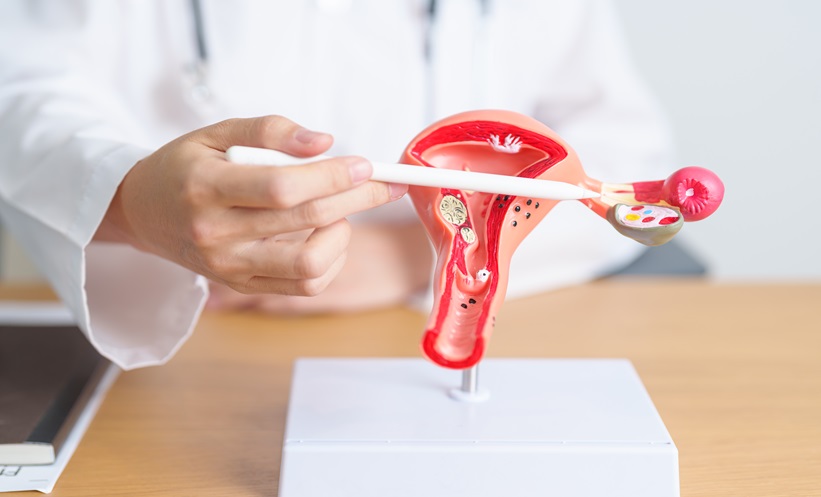Abstract
Endometriosis is a common benign disease that affects young women and carries a significant risk to the reproductive organs. Studies have shown that endometriosis is associated with diminished ovarian reserve and worse prognosis in assisted reproductive technology treatments. Surgical treatment aims to remove the disease while maintaining reproductive potential with minimal damage to the reproductive organs. The authors reviewed the published literature regarding fertility preservation in endometriosis, focussing on patient selection criteria, available treatment options, and follow-up. The goal of this study was to find evidence to answer the following clinical questions: how should women of reproductive age with endometriosis be managed, and what fertility-sparing options are available? Cryopreservation of embryos and mature oocytes are established techniques for preserving fertility in women during the reproductive period. Fertility preservation is a key consideration in the care of young girls and women with endometriosis, mainly those with ovarian endometriomas and advanced disease. Although no cohort studies have been published on the subject to date, adequate information detailing disease progression, treatment options, and the risks involved should be made available for these women. Available fertility preservation strategies include embryo and oocyte crypreservation, and women should be counselled individually on the risks, benefits, and costs involved with these options. In this scenario, management by a multidisciplinary endometriosis team is a fundamental step for producing successful results.
INTRODUCTION
Fertility preservation is increasingly attracting the attention of physicians and patients. The advances in oncologic care worldwide have made it possible for young women undergoing cancer treatment, with a significant disease-free life expectancy, to consider maternity. Similarly, women with other medical conditions have now turned their attention to fertility. This is the case for women with endometriosis, a condition that affects about 10% of women of reproductive age and up to 50% of women with chronic pelvic pain and infertility.1
Endometriosis is associated with infertility via several pathophysiological mechanisms, including hormonal dysfunction; oocyte dysfunction; dysfunction of the secretory phase of the menstrual cycle; inflammation, which interferes with sperm–oocyte interaction; low embryo quality; reduced implantation rate; and decreased ovarian reserve.1 Studies have shown that endometriosis is associated with diminished ovarian reserve2 and worse prognosis in assisted reproductive technology (ART) treatments.1,3 In some cases, an interaction between the the numerous pathophysiological alterations may combine together and act through mechanisms that have not yet been fully elucidated.1
The exact effect of endometriosis on ovarian reserves is yet to be established. The presence of ovarian endometriomas is detrimental to ovarian reserve markers, such as anti-Müllerian hormone (AMH), by either affecting their production or through a direct, as yet unknown, effect.1,2 In addition, large endometriomas may interfere with ovarian vascularisation. Moreover, endometriosis treatment frequently requires surgery, particularly in patients that present with ovarian cysts and deep endometriosis (DE).1,2 Surgical treatment candidates include women in whom pain was not improved with medical treatment and those seeking to become pregnant.1,3
Recently, the safety and reproductive repercussions of endometrioma resection have been questioned. The discovery of ovarian tissue containing follicles present in the endometriotic cyst walls has raised the concern that surgery for endometriotic cysts can further compromise fertility in women with endometriosis.4-6
In addition, recent data have shown that endometriosis affects approximately 35–54% of women with symptoms of chronic pelvic pain and dysmenorrhea, and most of them have advanced Stage III or IV disease. It is important to note that most of these advanced cases include the occurrence of extensive tubo-ovarian adhesions in addition to endometriomas, resulting in an adverse effect on the reproductive potential.7 As a result, fertility preservation has become a main focus in women undergoing surgery for endometriosis. The patients should be adequately counselled regarding fertility issues before the procedure and given evidence-based information about disease progression, ovarian reserve, the available therapeutic options, and the risks associated with each procedure.8,9
Oocyte and embryo cryopreservation are established fertility preservation techniques.10 Both techniques require controlled ovarian hyperstimulation and oocyte retrieval. For patients that have a partner, embryo cryopreservation is preferred. For single and younger patients, oocyte cryopreservation is the suggested course of action. Other techniques, such as immature oocyte retrieval and in vitro maturation for cryopreservation and ovarian tissue cryopreservation, have also been studied, but they are not currently recommended as standard options for clinical practice.10,11
The authors set out to perform a review of the relevant articles without language restriction based on a PubMed search from 1966–December 2018 using the keywords: “fertility preservation”, “endometriosis”, “endometriomas”, “surgical treatment”, “pregnancy”, and “assisted reproductive technology”. Society guidelines, such as the European Society of Human Reproduction and Embryology (ESHRE), the American College of Obstetricians and Gynecologists (ACOG), and the Royal College of Obstetricians and Gynaecologists (RCOG) were also searched. The authors reviewed the published literature detailing fertility-preserving management in endometriosis focussing on the selection criteria of the patients, available treatment options, and follow-up. The authors aimed to find evidence to answer the following clinical questions: how should we manage reproductive age women with endometriosis, and what fertility-sparing options are available?
HOW SHOULD WE MANAGE REPRODUCTIVE AGE WOMEN WITH ENDOMETRIOSIS?
Ovarian Reserve Evaluation
Progressive loss of ovarian follicles is frequently responsible for subfertility and may also have a negative impact on the results achieved by ART. Progressive loss of ovarian follicles also affects patients who are not seeking pregnancy at present but are interested in preserving their chances of conceiving a child in the future.12 Ovarian reserve evaluation is a step of foremost importance in the treatment of women with endometriosis, especially those seeking fertility care, and thus should guide physicians regarding fertility preservation. The oocyte yield can be compromised by the presence of endometriotic lesions and cysts, and the surgical procedures performed to treat these women may jeopardise the ovarian reserve.6
A woman’s age is the single most important predictor for success with ART, with pregnancy rates declining with advancing age.13 Therefore, ovarian reserve markers should be assessed to better inform patients of the expected success rates before engaging in any fertility preservation procedure or in endometriosis surgery. The available tests include early follicular phase follicle-stimulating hormone levels, AMH dosage, antral follicle count (AFC), and ovarian volume estimated by transvaginal ultrasound, which are predictive of the number of oocytes retrieved with ovarian stimulation and are associated with pregnancy rates.14 The ideal marker would show a significant change in levels from adolescence to the late reproductive period and should enable age-independent prediction of an individual’s reproductive life span and spontaneous pregnancy in the general population.15
AFC and AMH are the most reliable and most commonly used ovarian reserve markers.16-18 AFC consists of counting the number of follicles with a diameter ranging from 2–10 mm and is extensively used in ART clinics, due to its prompt availability and ease of access. AFC correlates well with response to gonadotropin stimulation.
The presence of ovarian endometriosis is associated with diminished serum AMH, lower AFC, lower response to controlled ovarian stimulation, and higher doses of gonadotropins used in ART cycles.19 Diminished ovarian reserve has been reported not only in women with ovarian endometriomas,20 but also in those with minimal-to-mild disease.2
Excised endometriomas consistently exhibit oocytes containing ovarian cortex firmly attached to the cyst wall, which makes the damage to the ovarian reserve a main concern in endometriotic cyst surgery, and Busacca et al.21 reported a 2.4% risk of ovarian failure after bilateral ovarian endometrioma excision. Cystectomy can also have negative effects on the ovarian blood supply and spontaneous ovulation rates.22 The impact of cystectomy in the ovarian reserve can be reliably assessed by serum AMH dosages.23
Although it is assumed that cyst drainage and wall ablation can be less harmful to the ovarian reserve, they are associated with lower pain improvement and higher rates of endometrioma recurrence; therefore, the two techniques are not recommended as a first choice procedure.3 Thus, patients considering pregnancy should not undergo repetitive surgery to preserve the ovaries and minimise damage to the follicle reservoir,3 while a fertility preservation approach should be considered before endometrioma surgery in those who do not plan to become pregnant immediately. Martyn et al.15 reported that AMH screening should be offered to all women in their 30s who are not contemplating pregnancy because clinical risk factors will only identify about 50% of women at risk of reduced ovarian reserve.
When managing endometriosis, physicians should focus on early recognition of subfertility risk and provide immediate referral to an ART specialist when needed.24 Moreover, low preoperative AFC or AMH can help to predict the need for repeated stimulation cycles to obtain a satisfactory oocyte yield that would provide an improved chance of success for future in vitro fertilisation (IVF) with thawed oocytes. These measurements should also indicate to surgeons that they should pursue less aggressive techniques to minimise harm to fertility potential in this setting.
Surgery
Pain relief and improved fertility are the primary goals of surgical tretament of endometriosis. Removing the disease while maintaining reproductive potential with mininmal damage to the reproductive organs remains a challenge3,25 in DE, superficial, ovarian endometeriosis.26,27
Ovarian Endometrioma Surgery
In the therapeutic planning for women who wish to maintain their reproductive potential, it is of paramount importance to consider that the presence of endometriosis in any form (superficial, ovarian, or deep) is capable of interfering in ovarian function, and that endometrioma surgery can aggravate this.22,28
Superficial endometriosis is associated with lower fecundity rates and reduced ovarian reserve with low AMH levels.2,6 The presence of endometrioma also impacts ovarian function, although the relationship between endometriomas and damage to the ovarian reserve remains controversial.28 The rate of spontaneous ovulation is lower in the ovary with endometrioma.22 Follicle density is lower and fibrosis is more frequent in the ovarian cortex containing endometriomas.29 In addition, the presence of DE may be associated with reduced ovarian reserve and a lower number of oocytes retrieved in IVF cycles, probably due to the pelvic inflammatory process found in DE.30
Endometrioma surgery reduces follicular reserve and impairs ovarian function. This was demonstrated by the significant decrease in serum levels of AMH after cystectomy and by the decrease in ovulation rates after laparoscopic cystectomy, compared to the indexes before surgery.29 The decrease in AMH is greater when cystectomy is bilateral compared with unilateral. In IVF cycles, a lower number of oocytes were obtained with a decrease in pregnancies and live birth rates after bilateral cystectomy compared to cycles without endometriomas.31 Muzii et al.,28 on the other hand, used AFC to assess ovarian reserve endometrioma surgery in their meta-analysis. They found that ovarian reserve was not decreased following endometrioma removal. However, operating on recurrent endometriomas seems to be more detrimental to the ovarian reserve. Thus, indications for surgical treatment for recurrent endometriomas should be viewed with caution.32
Clearly, the larger the ovarian endometriomas and the more extensive and complex the pelvic adhesions are the worse the reproductive prognosis will be, and it is the surgeon’s responsibility not to aggravate such a situation. The principles that govern these objectives are, fundamentally, the preservation of ovarian follicular reserve and the prevention of postoperative pelvic adhesions with minimal possibility of residual disease.
Surgery for Deep Endometriosis and Infertility
DE is considered a specific entity that has been arbitrarily defined in histological terms as endometriotic lesions extending >5 mm in diameter underneath the peritoneum,33 and it is usually responsible for painful symptoms. Although DE is frequently associated with infertility, the evidence of a clear connection between the disease and infertility is weak. Studies suggest that infertility in these women is probably due to the strong link between DE and adhesions, superficial endometriotic implants, ovarian endometriomas, and adenomyosis.34 Although there is evidence that DE is associated with infertility, it is still unclear whether surgery to treat this form of the disease is capable of improving fertility because the primary indication of this operative approach has been for the treatment of pelvic pain.35
Duffy et al.36 found that laparoscopic surgery was associated with an increased live birth or ongoing pregnancy rate, as well as a clinical pregnancy rate in comparison to diagnostic laparoscopy. No solid conclusions of safety could be drawn as there was insufficient evidence regarding adverse events.
While some specialists advocate complete surgical removal of endometriotic lesions to improve fertility,37,38 others recommend that extensive surgery for intraperitoneal and DE in infertile women does not improve global fertility prognosis and may be associated with a higher complication rate.39,40 Vercellini et al.41 highlighted that women should be carefully counselled on the chances of getting pregnant after surgery. They found that pregnancy rates dropped by 15% in those who sought spontaneous conception after surgery in comparison to those who underwent IVF, which dropped from 39% to 24%.
In summary, the effect of surgery on the fertility of women with deep infiltrating endometriosis remains unanswered due to the heterogeneous nature of the disease, as well as lack of adequate trials with enough power and follow up to study this.
WHAT ARE THE FERTILITY-SPARING OPTIONS AVAILABLE?
Embryo, Oocyte, and Ovarian Tissue Cryopreservation
Cryopreservation of embryos and mature oocytes are established techniques for preserving fertility in women of reproductive age.9 Controlled hyperstimulation of the ovaries is necessary, followed by oocyte recovery with transvaginal ultrasound for the successful cryopreservation of embryos and mature oocytes. The mature oocytes obtained may be cryopreserved or fertilised and the resulting embryos cryopreserved. Cryopreservation of embryos is an effective option provided there is time to perform ovarian stimulation and an available sperm donor. Oocyte cryopreservation is the best choice for fertility preservation in women with endometriosis who wish to postpone pregnancy or those who will undergo surgical treatment for endometriosis in the future.42 Vitrification is an efficient method of cryopreserving oocytes while maintaining fertilisation and pregnancy rates similar to IVF techniques with fresh oocytes.43
Although fertility preservation was initially designed for cancer patients, recently Elizur et al.8 reported a case of oocyte cryopreservation in a 25-year-old woman with endometriosis and chronic pelvic pain. The patient had undergone oophoretomy but retained significant pelvic pain and was at risk of losing the remaining ovary. After three cycles of ovarian hyperstimulation, 21 oocytes were cryopreserved.
Fertility Preservation Using Oocytes
Garcia-Velasco et al.42 published their experience with 38 endometriosis patients who underwent oocyte cryopreservation to maintian their future fertility. No pregnancies have been reported in the group to date. Rad et al.45 published an observational study detailing fertility preservation in 62 women with endometriosis, but only 49 patients underwent controlled ovarian stimulation and oocyte vitrification. Previous endometrioma surgery was associated with reduced response to controlled ovarian stimulation. No outcomes after oocyte thawing and pregnancy are reported. The authors reported that fertility preservation is an important issue in young women with severe endometriosis and individualised couselling should take into consideration the patient’s age, disease extent, and progression, as well as the presence or absence of ovarian endometrioma and previous or present indication of ovarian surgery.
There is concern regarding the quality of the response in cases of endometriosis, since some studies suggest that women with endometriosis who undergo IVF cycles have lower rates of pregnancy and implantation when compared to those with tubal infertility.46 This would occur as a result of reduced oocyte quality and embryonic development, as well as endometrial receptivity. Harb et al.47 published a meta-analysis showing reduced rates of fertilisation in women with Grade I/II endometriosis, as well as pregnancy and implantation in women with Grade III or IV endometriosis. Therefore, more cycles of controlled ovarian stimulation and IVF may be necessary to obtain sufficient good quality oocytes to generate embryos with development and quality suitable for freezing. Ovarian hyperstimulation does not appear to increase the risk of progression of endometriosis or recurrence of lesions in patients already treated.48,49 In addition, the presence of endometrioma at the time of ovular collection may increase the risk of pelvic infection and abscess formation.50
In infertile patients with ovarian endometrioma, the surgical approach should be carefully discussed. Excision of the endometrioma capsule increases the spontaneous pregnancy rate in the postoperative period compared to drainage and electrocoagulation of the endometrioma wall;50 however, such surgical techniques may present a risk of decreased ovarian reserve, either by removal of normal ovarian tissue during excision or by thermal damage to the ovarian cortex during ablation. Published data shows that the presence of endometriomas significantly reduces AMH values in comparison to the absence of endometriosis.21,22 Surgical excision of endometriomas seems to negatively influence ovarian reserve but only temporarily.51 Others suggest that the mere presence of an endometrioma adversely affects ovarian reserve and it may be difficult to measure such effects before surgery.52 Therefore, despite efforts to minimise surgical damage, the ovarian reserve may still be affected by the presence of endometrioma per se. Endometrioma size, bilaterality risk of subsequent ovarian failure, surgical technique, and the surgeon’s expertise, as well as the patient’s age, should also be taken into account before surgical excision if future fertility is a concern.50-52
Ovarian tissue cryopreservation is currently used to preserve fertility in women of reproductive age who are at high risk of losing ovarian function (chemotherapy, radiotherapy, and some benign conditions are associated with a high risk of premature ovarian failure).53 In prepubertal girls at risk of losing reproductive potential, ovarian tissue cryopreservation may be the only alternative theraputic option available. However, it should be noted that the procedure is still considered to be experimental.53-55 In patients with endometriosis, healthy fragments of ovarian cortex can be isolated and cryopreserved during surgical removal of endometrioma. The technique should be evaluated with caution, as there is a risk of transfer of small foci of endometriosis in the cryopreserved tissue.9,42 The advantage of tissue cryopreservation is that there is no need for ovarian hyperstimulation. Many unanswered technical questions remain, related to the choice of cryopreservation technique, chances of ovarian function recovery after transplantation, and pregnancy rates after the procedure.55 Data remain scarce regarding the use of this fertility preservation technique in women with endometriosis; further studies are needed before cryopreservation of ovarian tissue can be indicated as the first choice in preserving fertility in patients with endometriosis.42
CONCLUSION
Endometriosis is a common benign disease that carries significant risk to the reproductive organs. Fertility preservation is a key consideration in the care of young girls and women with endometriosis, particularly those with ovarian endometriomas and advanced disease. Although there have been no cohort studies published on the subject so far, adequate information on disease progression, treatment options, and the risks involved should be available for these women. It is still too early to define fertility preservation as the standard of care for all women with endometriosis because very few cases have been reported and the available data does not allow for robust cost–utility analyses. However, fertility preservation should be taken into consideration for those with bilateral unoperated endometriomas and those who previously had unilateral endometriomas removed and require surgery for a contralateral recurrence.56 Available strategies include embryo and oocyte crypreservation, and women should be counselled individually on the risks, benefits, and costs involved with all available techniques. In this scenario, management by a multidisciplinary endometriosis team is a fundamental step towards achieving successful outcomes.








